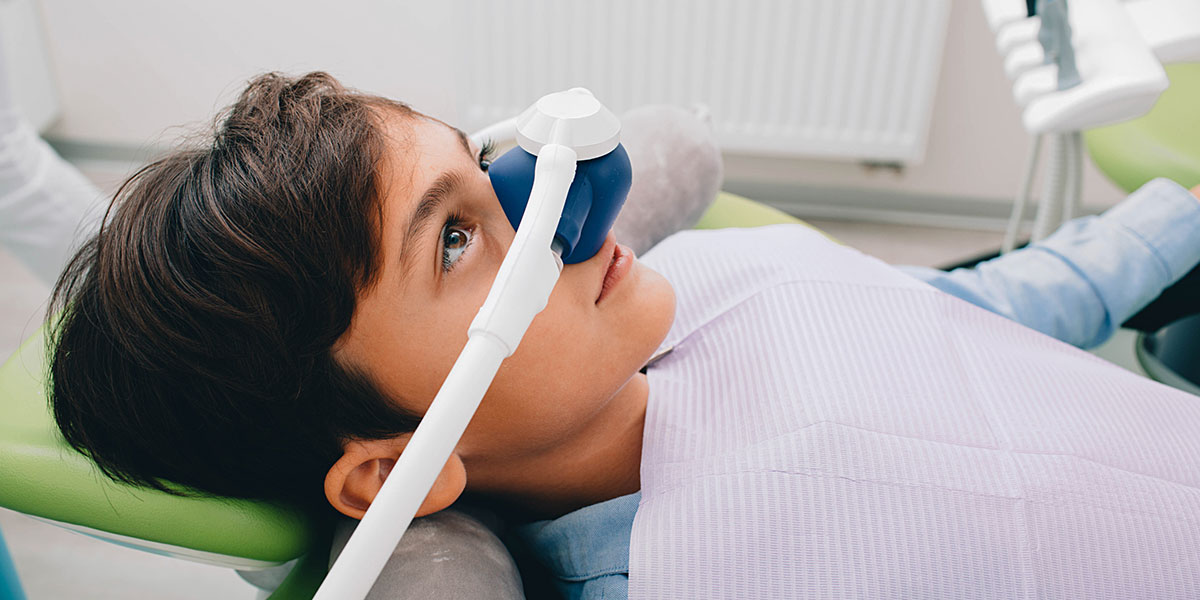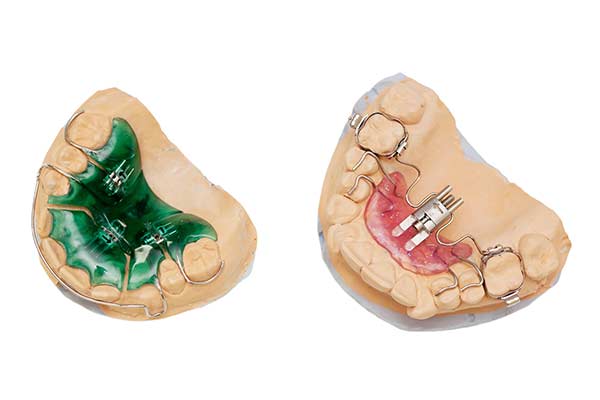Pediatric Dentistry

How Dentistry for Children is Practiced
Children’s dental health care has entered a new era. It is a revolutionary time in how dental disease is diagnosed, treated, and prevented by the dental profession. It seems difficult at times to keep up with these ever-changing advances and pass on their benefits to our patients. Yet, there are new and very fundamental principles that are forming the framework for a different perspective upon which will change how dentistry for children is practiced
Assessing the “risk level” of the child developing caries is an approach that is more commonly being adopted as a means to manage dental caries. This individualizes treatment and prevention modalities, enabling the dentist to have an impact on the delicate balance that reduces the factors that contribute to disease and increases those that are protective.
Your Child’s First Visit
According to the American Dental Association and the American Academy of Pediatric Dentistry, a child’s first dental check-up should occur by the age of one. Having the planned visit within 6 months of the first tooth coming in is an appropriate time as well.
Accompanying your child on the first visit is encouraged. This gives you an opportunity to see the doctor working with your child and allows them to discuss dental findings and treatment needs directly with you.
Should your child be more comfortable sitting on your lap, tell your doctor. Examinations are able to be accomplished in various positions based on the preferences of the parent and practitioner.
Most often the first visit experience will be positive, however, should your child become anxious, cry, or be resistant, please understand it is a normal reaction. It could actually help them through what they may perceive as a threat. Let the dentist be the one to manage those feeling and behaviors.
On the day of the first visit, describe to your child what we will do in the simplest and most age-appropriate terms, for example:
- “count (examine) your teeth”
- “clean your teeth”
- “apply a paint (fluoride) to strengthen them”
- “possible pictures (radiographs) of the teeth will be taken”
If there are questions presented that you are not sure of how to answer, please defer those to your dentist. Depending on whether your child will benefit from your presence during the visit, the doctor may ask you to either accompany them into the treatment area or have you relax in the reception lounge. This is a discussion that can be had prior to the visit.
Try to avoid having your child hear negative stories about dentistry or have them hear anxiety-provoking words such as:
- “drill”
- “shot”
- “hurt”
- “cavity”
Do not:
- Bribe
- Make promises as to what we will or will not do
- Threaten them with work that may or may not need to be done
Behavior Guidance
The goals of “behavior guidance” are to establish communication, lessen fear and anxiety, deliver quality dental care, build a trusting relationship, and promote the child’s positive attitude. Behavior guidance techniques, both nonpharmacological and pharma-logical, allow the practitioner to perform quality oral health with safety and efficiency for infants, children, adolescents, and persons with special health care needs. The selection of techniques is chosen based upon the specific requirements of each individual patient and the judgment of the doctor. Some of the techniques used are the following:
 If a child is worried by the sights, sounds, or sensations of dental treatment, they may respond more positively with the use of nitrous oxide/oxygen. Nitrous oxide/oxygen, which has been referred to as laughing gas is a safe aid to reduce anxiety and gagging in children. The child breathes the gas through a mask placed on the nose and remains fully conscious and interactive during procedures. Recovery after treatment is rapid and complete.
If a child is worried by the sights, sounds, or sensations of dental treatment, they may respond more positively with the use of nitrous oxide/oxygen. Nitrous oxide/oxygen, which has been referred to as laughing gas is a safe aid to reduce anxiety and gagging in children. The child breathes the gas through a mask placed on the nose and remains fully conscious and interactive during procedures. Recovery after treatment is rapid and complete.Infant Oral Health Care
Your child's oral health is important at every age. Baby teeth, also called primary teeth, are shed, but they are still very important for a number of reasons.
Children need strong, healthy baby teeth in order to chew food properly, pronounce words correctly, and maintain space in the jaw for permanent teeth. That is why it is important to take good care of the primary teeth by keeping them clean and healthy.
Even before the first tooth erupts, your child’s gums should be wiped gently with a wet cloth or gauze after every feeding. At the appearance of the first tooth, begin brushing or wiping your child’s teeth with water.
For children under 3 use a “smear of toothpaste” (left photo). Children 3 to 6 years old should be supervised during brushing to ensure that only a pea-sized amount (right photo) of fluoride toothpaste is used and that the toothpaste is encouraged to spit out rather than swallow. Rinsing with tap water which is fluoridated is of additional benefit.
Primary teeth, if not kept clean and healthy, can develop decay. This decay can lead to more complicated dental procedures, and even infection, which could affect the developing permanent teeth.
Tooth decay in infants and young children occurs when the teeth undergo frequent and extended exposure to liquids containing sugar. To keep your child’s teeth cavity-free do not allow your child to fall asleep with a bottle containing anything other than water. Feed or nurse your baby in the upright position so the fluids do not pool in the mouth. Milk, formula, and juice, when given to a child right before they fall asleep, can remain on the teeth and in the mouth causing tooth decay. Be cautious with sticky snacks such as raisins that also can remain on teeth for extended periods of time. The longer any sugar or carbohydrate-containing foods are not cleared from the mouth, the greater the opportunity they can contribute to cavity formation. If your child needs a pacifier between feedings or at bedtime, give them a clean pacifier. Do not give your child a pacifier dipped in honey or sugar.
Prevention
Fluoride in combination with a good diet and oral hygiene is the most effective way to ensure healthy teeth.
Water fluoridation is still the No. 1 cost-effective way to prevent tooth decay. It has the ability to reduce decay by 50 to 70 percent. However, not every community is fluoridated. Therefore, those children who are not in a fluoridated area or those that are especially predisposed to cavities can gain significant benefits from fluoride in other ways as well. They include:
- The use of fluoride toothpaste at home, in conjunction with brushing all surfaces of the teeth twice daily
- Office application of fluoride e.g. as fluoride varnish
- Home fluoride rinses
- Prescription toothpaste that are high in concentrations of Fluoride and “remineralizing” calcium and phosphates
 Children under the age of 6 should not use anything other than regular toothpaste at home in amounts that are age-appropriate. Participation of parents in the brushing process is important at least up to the age of 3 as a child doesn’t have the dexterity to do it themselves effectively. After that age, supervision and or continued participation on the part of parents is essential to effectively brush all sides of every tooth. Helping to brush from behind with the head cradled makes it easier to visualize the teeth and manipulate the brush.
Children under the age of 6 should not use anything other than regular toothpaste at home in amounts that are age-appropriate. Participation of parents in the brushing process is important at least up to the age of 3 as a child doesn’t have the dexterity to do it themselves effectively. After that age, supervision and or continued participation on the part of parents is essential to effectively brush all sides of every tooth. Helping to brush from behind with the head cradled makes it easier to visualize the teeth and manipulate the brush.Children must be able to spit out to use home rinses, and prescription toothpaste in order to avoid the possibility of “fluorosis” of permanent teeth. Dental fluorosis is the appearance of faint white lines or streaks on the permanent teeth that occurs when younger children consume too much fluoride.
There are certain situations that a dentist may prescribe fluoride supplements for lack of fluoride in the drinking water supply. This must be done cautiously so that the amounts of fluoride ingested via toothpaste during brushing, and fluoride content in foods do not exceed the maximum amount of exposure. In these situations, the use of topical fluorides such as home fluoride rinses and prescription toothpaste may be more advisable.
Of course, diet plays a major role in cavity production. Many parents do not realize that too many carbohydrates and starches, (for example, pretzels and potato chips) can cause tooth decay. As with candy, the length of time that they remain on the teeth is the main culprit. Avoiding those foods that stick to the teeth e.g. Raisins, dried figs, jelly beans, caramel, will help protect the teeth.
Snacks in between regular meals should be served as infrequently during the day as possible. Encouraged healthy snacks such as cheese, vegetables, yogurt, peanut butter, and chocolate milk. If sugary treats are unavoidable, serve them with meals, not as snacks. If you would like to give your child sweets, offer desserts immediately following the meal when it is more likely to be cleared from the mouth by saliva.
A resin coating applied to the chewing surfaces of molars to fill in the irregularities and crevices of those teeth is a staple in dental prevention.
The American Academy of Pediatric Dentistry recommends the use of pit-and-fissure sealants on the chewing surfaces of primary and permanent molars in children and adolescents. This stems from the fact that:
- sealants are effective in preventing and stopping the formation of cavities of primary and permanent molars in children and adolescents compared to the non-use of sealants
- sealants can minimize the progression of non-cavitated occlusal caries lesions (cavities at their initial phase on the chewing surfaces) of the tooth that receives the sealant.
Radiography
Dental x-rays provide the dentist with help in identifying the condition of teeth, roots, jaw, and facial bone. They aid in the ability to find and treat dental issues such as cavities early on, such as cavities early in their development. It is an important tool to determine dental development and discover any abnormalities such as impacted teeth. There are various types of x-rays commonly used in dentistry and orthodontics with intended different purposes.
Panoramic x rays are extraoral images showing teeth and structures of the upper/lower jaws all in one image. This is often used in orthodontic diagnosis and treatment.
The amount of radiation emitted from X-rays these days is extremely small. Advances in x-ray machines allow for limited radiation because beams are more focused, in addition to the use of high-speed digital film. Protective aprons with collars are available that shield the sensitive thyroid area in children which should add to your comfort level.
The frequency of images will be determined by your dentist based on various factors, not the least of which is how cavity-prone your child is. Orthodontically it may be necessary to take repeated images in gauging treatment and development.
Restorative & Endodontic Treatment
There are various restorative materials that are used for different purposes in pediatric dentistry. Some are cited here:
Stainless Steel crowns are preformed metal crowns that adapt to individual teeth and are the most common crowns used in pediatric dentistry. They are indicated in permanent teeth as well as baby teeth that have extensive destruction of tooth structure from decay and other causes. These crowns are also used in those situations where teeth have undergone nerve removal, or where high cavity risk children need more definite restorative treatment.
A pulpotomy refers to the removal of the pulp chamber of the tooth (top part of its nerve) while a pulpectomy is the removal of both the chamber and the nerve within the roots of the tooth (“root canal”). In both cases, various medicaments or types of cement fill the remaining space which will aid retention of the tooth in the mouth.
The dental pulp consists of connective tissue, blood vessels, and nervous elements. A tooth’s pulp in children can become irritated, inflamed, or infected most often by means of either decay or trauma. This is no different from what can happen in adult teeth. When this occurs, as described the nerve can be removed in order to retain the tooth in the mouth just as it may in adults (root canal treatment). Consideration as to whether a pulpotomy, pulpectomy, or extraction is performed is based upon the severity of the pulp’s condition (inflamed or infected), and the doctor’s judgment.
SDF is a solution that is used to arrest (stop the progression) of cavities in both primary and permanent teeth. It is an antimicrobial and remineralization agent used in situations where traditional fillings or restorative treatment is not possible because of patient age, cooperative ability, or financial hardship. It is another tool that dentists have to manage cavities in order to delay treatment until such time a more definitive plan of care can be implemented. SDF requires multiple applications and a major drawback to its use is that the cavity which is treated turns permanently black.
Interceptive Orthodontics Appliance
Below are a few interceptive orthodontic appliances often used in Pediatric dentistry.
Space maintainers are used to keep teeth from drifting into an empty tooth space due to early loss of primary (baby) teeth. Primary teeth act as a guide for the eruption of permanent teeth and without them holding that space the permanent teeth could be prevented from assuming a normal position within the arch. Space maintainers can be either removable or fixed to other teeth and are of various varieties.
A habit appliance is useful to help stop a thumb or finger habit and/or to help re-train an improper tongue position or swallowing pattern. It is sometimes necessary to place an appliance to minimize the harm and distortion the habits or tongue posture can have on teeth. Most habit appliances are banded for adhesion to the back molars and are not removable.
Both removable and fixed PEDs can be used to address crowding and other issues by expanding the upper jaw to make more room to accommodate tooth and/or jaw alignment.
Caring for Children with Special Needs
Pediatric dentists are trained and have the skills to care for patients with special needs. They welcome and encourage those with special needs children to visit their offices and make use of the same services that are offered to all of their other patients.











